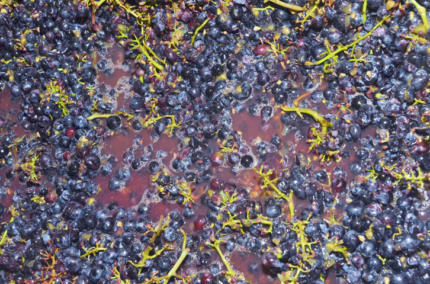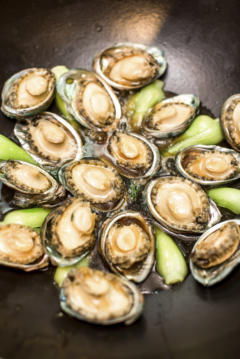New microbes discovered in feathers, a sea snail and wine must
Posted on August 13, 2019 by Laura Cox
Each month, the Microbiology Society publishes the International Journal of Systematic and Evolutionary Microbiology (IJSEM), which details newly discovered species of bacteria, fungi and protists. Here are some of the new species that have been discovered and the places they’ve been found.
Deep beneath the sea, in the East Pacific Ocean, a new species of bacteria has been discovered in sediment from over 3,700 metres below the surface. This new microbe produces bright yellow colonies when grown in the lab and was named Chengkuizengella marina.

Wine must contains the skin, seeds and
stems of grapes
Two new species of yeast have been discovered in Italy this month. Sporobolomyces agrorum and Soprobolomyces sucorum were found during a study of the crushed fruits and their juices – known as must – used in the first stage of wine and cider production. These pink-coloured yeasts were found in apple and grape musts collected from Verona, and the researchers suggest they could contribute to the aroma of the wine or cider. These were not the only new species’ of yeast isolated from an alcohol-production environment this month; Wickerhamiella shivajii was found in the runoff from a distillery in India. This new yeast was named after the eminent Indian microbiologist Dr. Sisinthy Shivajy, and can grow at temperatures as high as 43°C, making it ‘thermotolerant’.
A new genus and species of bacteria was discovered in a copper mine this month. Acidibrevibacterium fodinaquatile is the first species in the newly-recognised Acidibrevibacterium genus. The bacterium was found in acidic drainage from a Chinese copper mine and forms light yellow colonies, growing best in highly acidic conditions (pH 4.0).

Abalone are farmed as a delicacy in
many countries around the world
This month, two new species of microbes have been found in sea animals. Cohaesibacter intestini, a white, rod-shaped bacterium, was discovered in the intestine of a sea snail, or abalone, collected from a farm in Fujian Province in south-west China. Elsewhere in China, Corallincola holothuriorum was discovered in the intestine of a sea cucumber.
Wastewater treatment involves a number of complex methods to cleanse the water and remove pollutants and nutrients. One of these steps is to filter the water through ‘activated sludge’. This sludge is made up of around 95% bacteria and is a diverse and complex ecosystem. A new species of bacteria was found in sludge collected from a wastewater plant in China for the first time this month. The new microbe was named Thermomonas aquatica and is one of only seven species of bacteria in the Thermomonas genus.
Researchers in South Africa have found a new species of bacteria on chicken feathers. When grown in the lab, the new species, which researchers named Chryseobacterium pennipullorum, has a fruity odour and forms transparent colonies.
During a study of Pseudomonas isolated from clinical specimens collected in Botswana, Sweden and Spain, researchers discovered a new species of bacteria. They named this never-before-seen bacteria Pseudomonas nosocomialis. Meanwhile, further East, another new species of Pseudomonas was discovered this month. Pseudomonas juntendi was found in hospital patients in Japan and Mayanmar.
Another new microbe found in humans this month is Kosakonia quasisacchari, which was found in the wound of a patient in a Chinese hospital. This new bacterium forms large, white colonies when grown in the lab and was found to be resistant to the antimicrobials cefazolin and cefoxitin.

